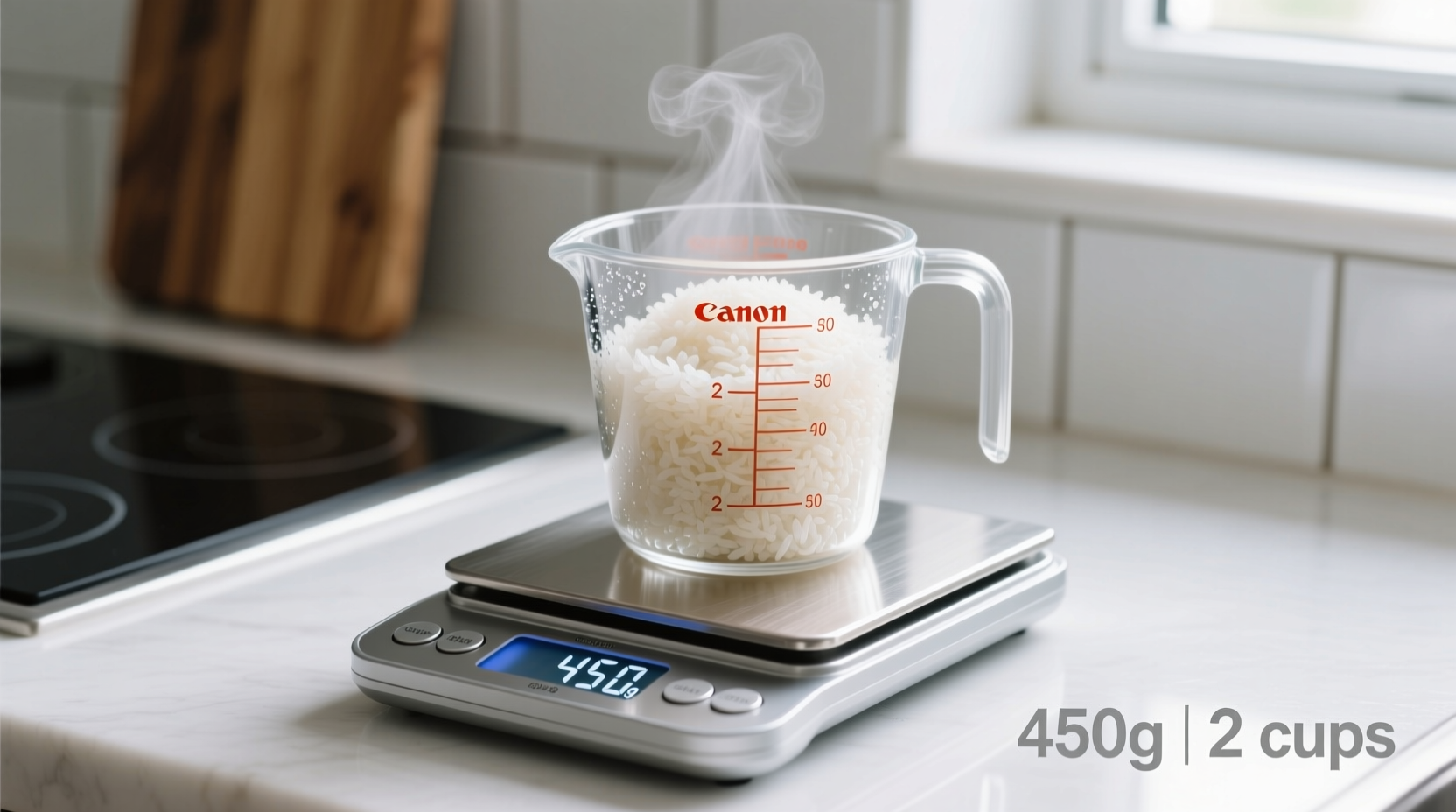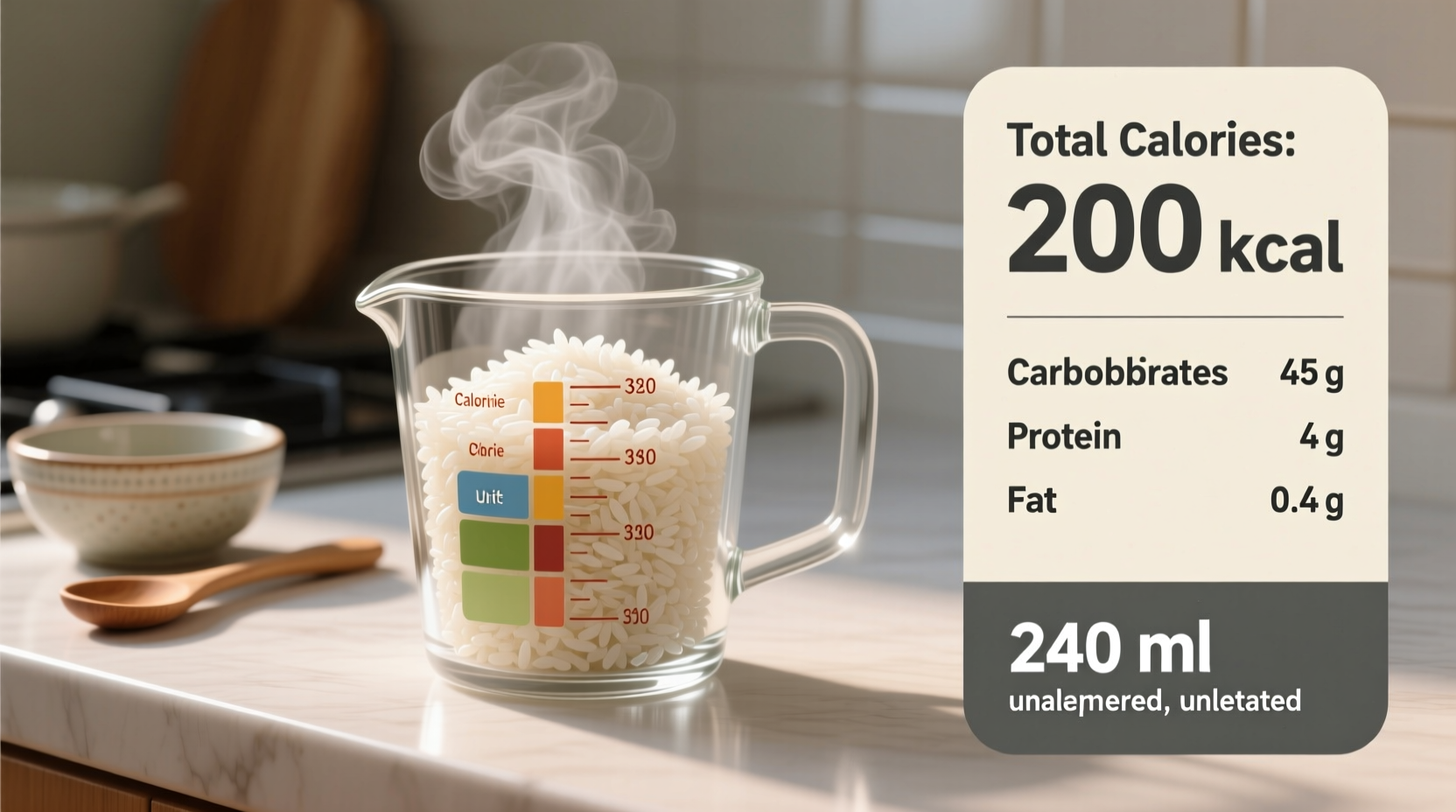When tracking your nutrition, knowing the precise calorie content of staple foods like rice is essential. Whether you're managing weight, following a specific diet, or simply curious about your meals, understanding the caloric value of cooked rice helps make informed dietary choices. This guide delivers scientifically verified information directly from authoritative nutritional databases, so you can measure portions with confidence.
Why Rice Calorie Counts Vary
The calorie content in cooked rice isn't a single fixed number—it depends on several factors that many nutrition trackers overlook. The type of rice, water absorption during cooking, and even how you measure your portion all affect the final calorie count.
Most people assume all rice has the same calories, but this misconception leads to inaccurate tracking. White rice and brown rice differ significantly in nutritional composition due to processing methods. Brown rice retains its bran and germ layers, which contain additional fiber and nutrients but also slightly more calories per cooked cup.
Calorie Breakdown by Rice Type
Accurate calorie counting requires understanding the differences between rice varieties. The USDA FoodData Central database provides the most reliable measurements for nutritional content. Here's a detailed comparison based on standard cooked portions:
| Rice Type | Portion Size (grams) | Calories | Carbohydrates (g) | Fiber (g) |
|---|---|---|---|---|
| Long-grain white rice | 158g (1 cup) | 205 | 44.5 | 0.6 |
| Medium-grain white rice | 158g (1 cup) | 210 | 45.8 | 0.5 |
| Short-grain white rice | 158g (1 cup) | 215 | 46.7 | 0.4 |
| Brown rice | 195g (1 cup) | 218 | 45.0 | 3.5 |
| Basmati rice (white) | 158g (1 cup) | 200 | 44.0 | 0.7 |
| Jasmine rice (white) | 158g (1 cup) | 205 | 44.5 | 0.6 |
Note the portion size difference between white and brown rice—brown rice expands less during cooking, resulting in a heavier cup (195g vs 158g for white rice). This explains why brown rice appears to have more calories per cup despite having similar caloric density by weight.

Factors That Change Calorie Counts
Several often-overlooked variables affect the calorie content of your cooked rice:
Cooking Method Differences
The way you prepare rice significantly impacts its final nutritional profile. Rice cooked in a rice cooker typically has consistent water absorption, while stovetop methods can vary based on water ratio and cooking time. The USDA standard measurement assumes a 1:2 rice-to-water ratio for white rice and 1:2.5 for brown rice.
When rice is cooked with added fats like butter or oil, the calorie count increases substantially—approximately 100 additional calories per tablespoon of added fat. Similarly, cooking rice in broth instead of water adds minimal calories but enhances flavor without significant caloric impact.
Portion Measurement Accuracy
Many people mismeasure rice portions, leading to inaccurate calorie tracking. A standard "cup" of cooked rice should be measured after cooking, not before. One cup of uncooked rice yields approximately three cups of cooked rice, with about 67 calories per uncooked cup.
For precise tracking, use a food scale rather than measuring cups. Cooked rice density varies based on fluffing and settling—weighing provides consistent results. The USDA National Nutrient Database (accessed via fdc.nal.usda.gov) confirms that weight-based measurement eliminates common portion errors.
Practical Portion Guidance
Understanding serving sizes in real-world terms helps with meal planning:
- Standard serving: 1/2 cup cooked rice (about 100 calories for white rice) fits comfortably in a cupped hand
- Dietary tracking tip: When restaurants serve rice, a typical portion is 1.5-2 cups—easily 300-400 calories
- Meal balance: For balanced nutrition, pair one cup of rice with 4 ounces of protein and 2 cups of vegetables
Registered dietitians commonly recommend the "plate method" for balanced meals: fill half your plate with vegetables, one-quarter with lean protein, and one-quarter with whole grains like brown rice. This approach naturally controls portion sizes while ensuring nutritional balance.
Nutritional Context for Health Goals
Rice provides primarily carbohydrates but also contains some protein and minimal fat. The fiber content differs dramatically between white and brown rice, affecting satiety and blood sugar response.
For weight management, brown rice generally offers better nutritional value due to higher fiber content, which promotes fullness and steadier energy levels. However, white rice remains valuable for athletes needing quick energy or those with digestive sensitivities.
The Academy of Nutrition and Dietetics notes that rice consumption patterns matter more than isolated portions. Pairing rice with protein and fiber-rich vegetables creates a balanced meal that mitigates blood sugar spikes, making even white rice a reasonable choice in proper context.
Frequently Asked Questions
Here are answers to common questions about rice calories and nutrition:
Does rinsing rice before cooking affect calorie content?
Rinsing rice removes surface starch but has negligible impact on calories. The USDA confirms that rinsed versus unrinsed rice shows less than 5 calories difference per cup. However, rinsing can reduce arsenic levels in rice, particularly important for frequent rice consumers.
How do I accurately track calories when rice is part of a mixed dish?
For mixed dishes like fried rice or rice bowls, calculate the total calories of all ingredients then divide by the number of servings. Weigh the entire cooked dish, then determine your portion's weight. This method is significantly more accurate than estimating rice content visually, which can lead to 30-50% tracking errors.
Does cooled rice have fewer calories than freshly cooked rice?
Cooling cooked rice increases resistant starch content, which provides fewer metabolizable calories. Research published in the Journal of Nutrition and Food Sciences shows that cooled rice may have 10-15% fewer digestible calories than freshly cooked rice. However, this difference applies primarily to reheated rice consumed cold, not when reheated properly.
Are instant rice products higher in calories than regular cooked rice?
Most instant rice products have nearly identical calorie content to traditionally cooked rice when prepared according to package directions. Some flavored instant rice products contain added sugars or fats that increase calories, so always check the nutrition label. Plain instant white rice typically contains about 210 calories per cooked cup, matching regular white rice.











 浙公网安备
33010002000092号
浙公网安备
33010002000092号 浙B2-20120091-4
浙B2-20120091-4